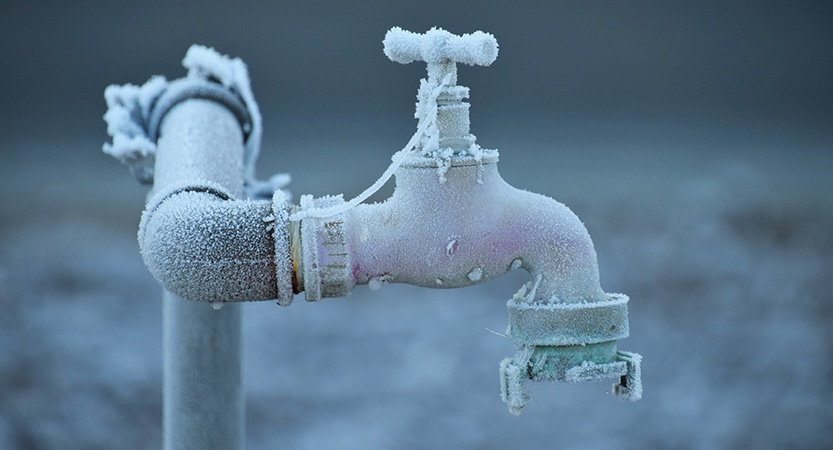Tips to Safeguard Pipes from Freezing: Specialist Advice
Tips to Safeguard Pipes from Freezing: Specialist Advice
Blog Article
Have you been interested in advise about 6 Ways to Prevent Frozen Pipes?

Winter can ruin your pipes, particularly by freezing pipes. Right here's just how to stop it from happening and what to do if it does.
Introduction
As temperatures decrease, the danger of frozen pipes increases, potentially resulting in expensive repair work and water damage. Understanding how to prevent icy pipelines is vital for property owners in cool environments.
Avoidance Tips
Insulating susceptible pipes
Cover pipelines in insulation sleeves or use heat tape to protect them from freezing temperatures. Focus on pipelines in unheated or external locations of the home.
Home heating methods
Maintain interior rooms sufficiently heated up, specifically locations with pipes. Open cabinet doors to allow cozy air to circulate around pipelines under sinks.
How to identify frozen pipelines
Seek lowered water circulation from taps, uncommon smells or sounds from pipes, and visible frost on subjected pipelines.
Long-Term Solutions
Structural modifications
Think about rerouting pipelines far from exterior walls or unheated areas. Add extra insulation to attic rooms, basements, and crawl spaces.
Updating insulation
Buy top quality insulation for pipes, attic rooms, and wall surfaces. Appropriate insulation assists preserve consistent temperature levels and minimizes the risk of frozen pipes.
Protecting Exterior Plumbing
Garden pipes and outdoor faucets
Disconnect and drain pipes garden hoses prior to wintertime. Mount frost-proof spigots or cover outside taps with protected caps.
Recognizing Icy Pipelines
What causes pipes to freeze?
Pipes freeze when exposed to temperatures below 32 ° F (0 ° C) for prolonged periods. As water inside the pipes freezes, it expands, putting pressure on the pipe walls and possibly creating them to break.
Threats and problems
Frozen pipes can lead to supply of water disturbances, residential property damage, and expensive repair services. Ruptured pipes can flooding homes and create extensive structural damage.
Indicators of Frozen Pipeline
Identifying icy pipelines early can stop them from rupturing.
What to Do If Your Pipelines Freeze
Immediate actions to take
If you suspect icy pipes, maintain faucets available to alleviate stress as the ice melts. Make use of a hairdryer or towels soaked in warm water to thaw pipelines slowly.
Verdict
Avoiding icy pipelines requires aggressive measures and quick feedbacks. By understanding the causes, indicators, and preventive measures, property owners can secure their pipes throughout cold weather.
5 Ways to Prevent Frozen Pipes
Drain Outdoor Faucets and Disconnect Hoses
First, close the shut-off valve that controls the flow of water in the pipe to your outdoor faucet. Then, head outside to disconnect and drain your hose and open the outdoor faucet to allow the water to completely drain out of the line. Turn off the faucet when done. Finally, head back to the shut-off valve and drain the remaining water inside the pipe into a bucket or container. Additionally, if you have a home irrigation system, you should consider hiring an expert to clear the system of water each year.
Insulate Pipes
One of the best and most cost-effective methods for preventing frozen water pipes is to wrap your pipes with insulation. This is especially important for areas in your home that aren’t exposed to heat, such as an attic. We suggest using foam sleeves, which can typically be found at your local hardware store.
Keep Heat Running at 65
Your pipes are located inside your walls, and the temperature there is much colder than the rest of the house. To prevent your pipes from freezing, The Insurance Information Institute suggests that you keep your home heated to at least 65 degrees, even when traveling. You may want to invest in smart devices that can keep an eye on the temperature in your home while you’re away.
Leave Water Dripping
Moving water — even a small trickle — can prevent ice from forming inside your pipes. When freezing temps are imminent, start a drip of water from all faucets that serve exposed pipes. Leaving a few faucets running will also help relieve pressure inside the pipes and help prevent a rupture if the water inside freezes.
Open Cupboard Doors
Warm your kitchen and bathroom pipes by opening cupboards and vanities. You should also leave your interior doors ajar to help warm air circulate evenly throughout your home.

I have been very occupied with Winter Plumbing Precautions: Preventing Frozen Pipes and I really hope you liked the new blog entry. Be sure to take the time to share this write-up if you enjoyed reading it. I thank you for reading our article about Winter Plumbing Precautions: Preventing Frozen Pipes.
Try Here Report this page